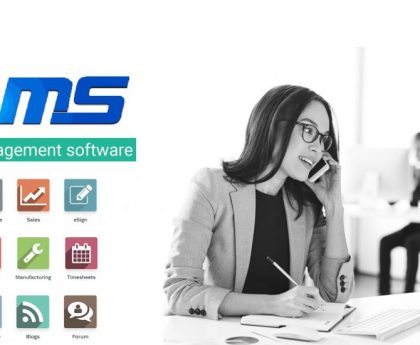In this webinar, we will be discussing the key features and benefits of Odoo’s accounting module including its user-friendly interface and seamless integration with other Odoo applications.
Then setting up your accounting application system, learn how to configure odoo accounting to suit your business needs, covering CoA setup, bank reconciliation, and automated invoicing process.
00:00 – Introduction
04:38 – Features of Odoo 17 Accounting Module
17:56 – Odoo 17 Accounting Dashboard
19:49 – Fiscal Localisation
24:07 – Coa, Taxes, Journals, Currencies, Fiscal Positions
45:31 – Customer Invoice Creation & Reconciliation, Lock Dates
01:13:05 – Asset Management and Reports
01:37:35 – Analytic Accounting in Odoo 17
01:50:24 – Budget Management & Budget Analysis
02:05:01 – Financial Reports
02:25:59 – Multi-company and Branch Concept
02:40:03 – Dynamic Reporting
02:41:31 – Conclusion
Also, advanced functionalities such as asset management, budget management, multi-currency support, branch and multi-company setup, Analytic Accounting, and, financial statements to streamline your accounting operations with odoo.
Basic configuration:
COA: The list of all the accounts used to document financial transactions in an organization’s general ledger is called the chart of accounts (COA). You have the option to organize the accounts in your chart of accounts by Code, Account Name, or Type.
Fiscal Localisation: The default fiscal localization package deployed in your database depends on the nation you specify when creating it. A standard chart of accounts, taxes, journals, and fiscal positions that have already been set up in compliance with national standards is included in this package. You may utilize it straight away or configure it to meet the demands of your business.
Taxes: There are many different kinds of taxes, and how they are applied varies a lot, largely based on where your business is located. Odoo’s tax engine supports a wide range of applications and computations to ensure that they are accurately recorded. The taxes that are automatically chosen when a new product is created are specified by default taxes.
Multi-currency setup: You may record transactions, send and receive bills, and issue invoices in currencies other than the main currency that your business has set up with Odoo. In addition, you may create bank accounts in different currencies and generate reports on your transactions in foreign currencies. By default, the main currency is determined based on the country of the company.
Fiscal Position: To facilitate the instant creation of new transactions, default taxes, and accounts are specified for both customers and products. However, employing multiple taxes and accounts for a transaction may be required depending on the company type and localization of the suppliers and customers. Fiscal positions enable the creation of policies that automatically modify the taxes and accounts utilized in a transaction. They can be allocated to a partner, applied automatically, or applied manually.
Budget management: Handling funds is a crucial aspect of managing a company. Budgets encourage individuals to prioritize and arrange their expenses more deliberately in order to reach their financial objectives. They provide the planning of a targeted financial result, after which the real performance is evaluated in comparison to the plan. Odoo uses both general and analytical accounts to handle finances.
Asset management: Asset management is the process of keeping an eye on, organising, and selling a company’s assets. Recently, an organization invested in machinery, automobiles, computers, and other equipment. These are fixed assets that we will use for a number of years. Nevertheless, assets lose a significant amount of value over time. Understanding a business’s profit or loss is aided by the appraisal of its assets and the most recent operating circumstances. A company has to manage a variety of assets, which can be difficult in some situations.
Analytic Accounting: Analytical accounting makes it easier to monitor expenses and income and assesses the profitability of a project or service. The analytic widget enables you to distribute expenditures across one or more analytic accounts while making journal entries. A summary of your expenses and income is provided by the analytical accounts.
Invoice/bill creation and reconciliation process: It is possible to manually create draft invoices from other documents, including purchase orders, sales orders, etc.
Connect With Us:
—————————————
➡️ Website:
➡️ Email: info@mycbms.com
➡️ Twitter:
➡️ LinkedIn:
➡️ Facebook:
➡️ Instagram:
➡️ Pinterest:
#Odoo #Accounting #Webinar #CBMS #Technologies #Odoo #Accountants #Odoo #Webinar


